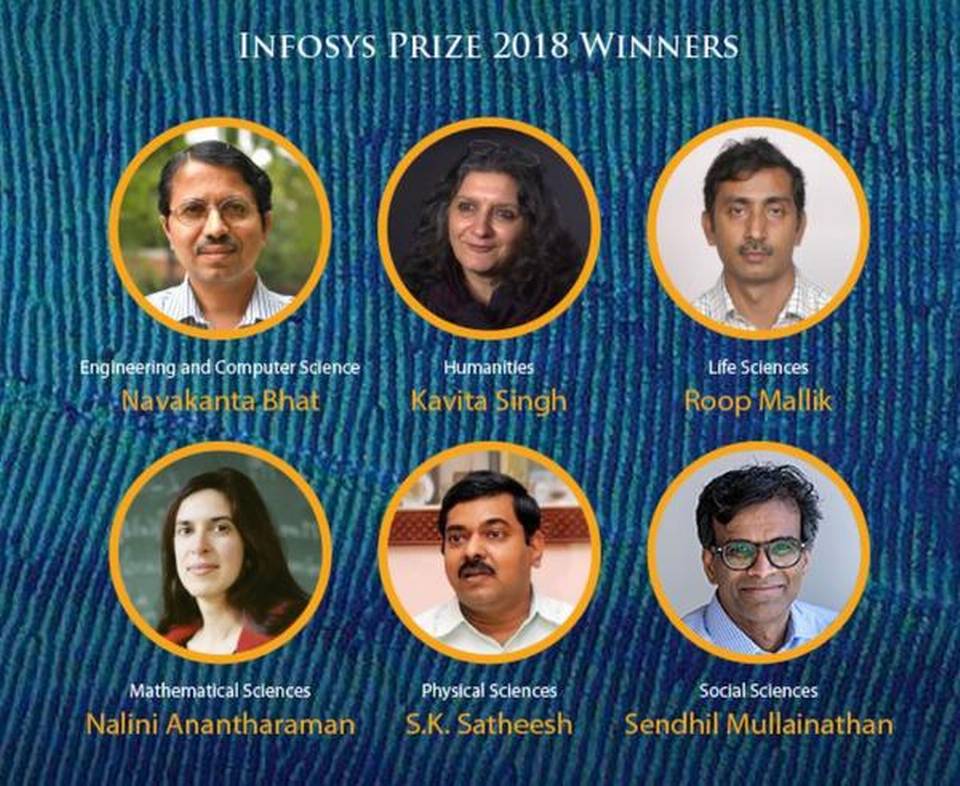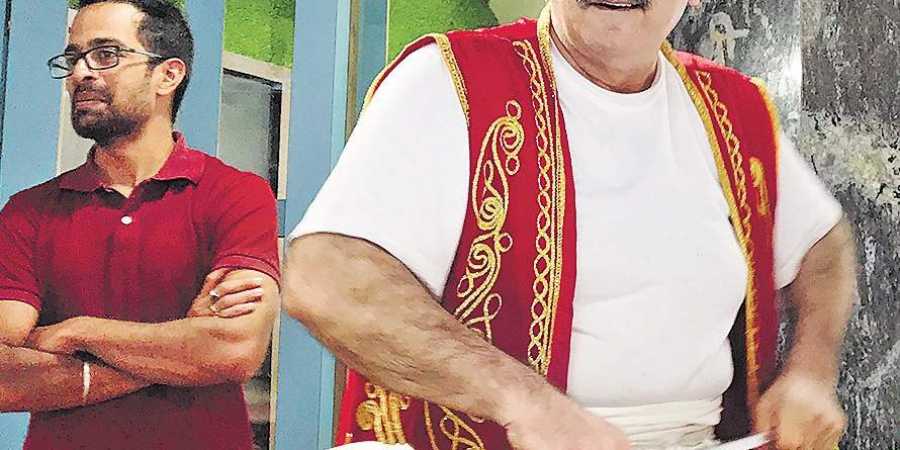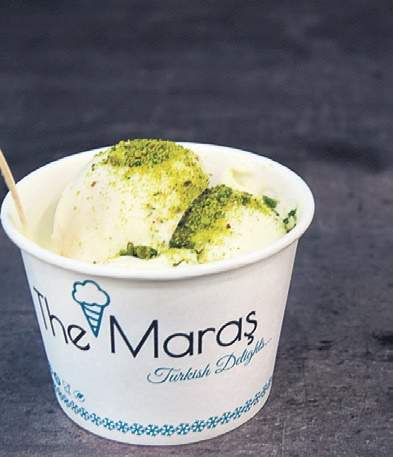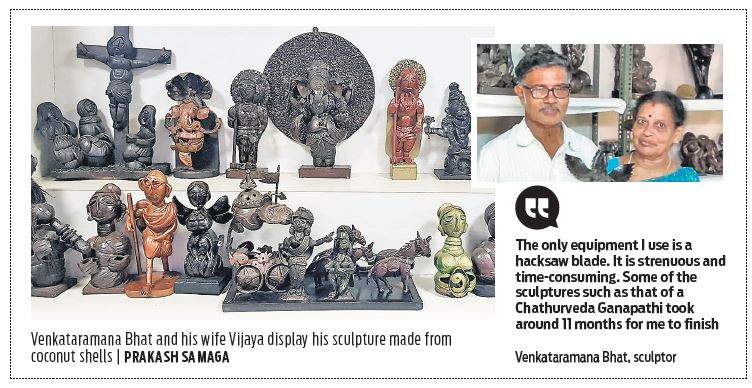Navakanta Bhat, Kavita Singh, Roop Mallik, Nalini Anantharaman, S.K. Satheesh and Sendhil Mullainathan are the winners out of the 244 nominations received in six categories
Six eminent professors have been awarded the Infosys Prize 2018 across different categories of science and research , the software major’s science foundation announced on Tuesday.
The annual award includes a pure gold medal, a citation and a prize purse worth $100,000 (or its equivalent in Indian rupees), the Infosys Science Foundation (ISF) said in a statement.
“India needs to cement its place as a hub for innovations across various fields of science,” said Narayana Murthy, Trustee ISF and Founder, Infosys.
“The Infosys Prize seeks to honour the efforts of some of the brightest scientists and researchers and highlight the country’s ongoing quest for science excellence,” Mr. Murthy said.
A six-member jury of renowned scientists and professors selected the winners from 244 nominations received in six categories, ISF said.
By recognising these researchers and celebrating their achievements, the Infosys Prize aims to inspire young minds to explore science as a career option and advance innovation in the country, the foundation said.
“With improving synergies between the scientific community and industry we are poised for cutting-edge science and research innovation. The science of today is, after all, the technology of tomorrow,” said K. Dinesh, President of ISF.
Engineering and Computer Science
In the field of Engineering and Computer Science, Navakanta Bhat, Professor, Indian Institute of Science, Bangalore was awarded for his work on the design of novel biosensors based on his research in biochemistry and gaseous sensors that push the performance limits of existing metal-oxide sensors.
Mr. Bhat has devised gas sensors with ultra-precise detection accuracies necessary for space and environmental monitoring, especially useful for India’s growing space, atomic energy and security programmes, ISF said.
Humanities
In the Humanities category, Kavita Singh, Professor and Dean, School of Arts & Aesthetics, Jawaharlal Nehru University, New Delhi was awarded for her study of Mughal, Rajput and Deccan art.
Ms. Singh’s work shows the significance of museums in highlighting the social impact of art, and thereby relates visual culture to large contemporary questions of secularity, modernity, and political conflict, the foundation said.
Life Sciences
The prize for Life Sciences was awarded to Roop Mallik, Associate Professor, Department of Biological Sciences, Tata Institute of Fundamental Research, Mumbai for his work on molecular motor proteins, which are crucial for the functioning of living cells.
Mr. Mallik has identified and measured forces needed to transport large particles inside cells, and demonstrated their role in fundamental processes such as targeting pathogens for their destruction and moving lipid droplets for fatty acid regulation in the liver.
Mathematical Sciences
Nalini Anantharaman, Professor and Chair of Mathematics, Institute for Advanced Study, University of Strasbourg, France was awarded the prize in Mathematical Sciences for her work related to “Quantum Chaos”.
The quantum world is the one of the deepest secrets of the universe and mathematics is the language that helps us understand this world, ISF said.
Mathematicians and physicists have been trying for decades to unravel the mysteries of this subatomic world.
Physical Sciences
In the field of Physical Sciences, S.K. Satheesh, Professor, Centre for Atmospheric & Oceanic Sciences, Indian Institute of Science, Bangalore, was awarded for his pioneering scientific work in the field of climate change.
His studies on black carbon aerosols, the dark, light absorbing, microscopic particles in air which greatly influence the energy balance of the atmosphere over the Indian subcontinent, have enabled a better understanding of the role of these particles on climate change, precipitation, and, human health in the Indian subcontinent.
Social Sciences
The Infosys Prize 2018 for Social Sciences is awarded to Sendhil Mullainathan, Professor of Computation and Behavioral Science, the University of Chicago in the U.S. for his path-breaking work in behavioural economics, ISF said.
Mr. Mullainathan’s research has had substantial impact on diverse fields such as development, public finance, corporate governance and policy design.
A significant part of this work is relevant to India, ISF said.
“We hope the work of all our winners bears fruit and helps improve societies and economies across the world,” said Mr. Dinesh.
source: http://www.thehindu.com / The Hindu / Home> Science / by PTI / Bengaluru – November 13th, 2018







